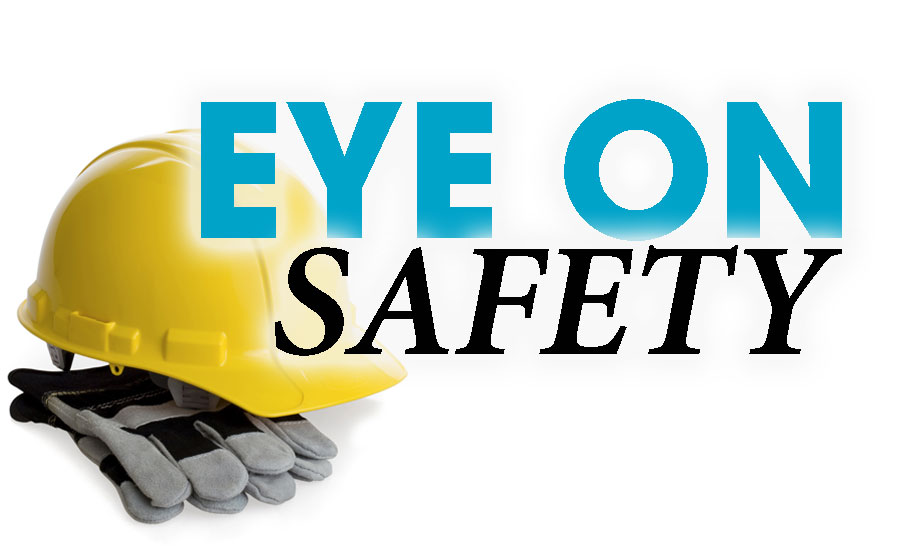We have all been focused on COVID-19, and with all of the rapid changes occurring related to the pandemic, it is difficult to write an article that is not outdated before the publication date. So, for up-to-date information concerning the pandemic and workplace safety, I refer you to the ASA website at www.asa.net/safety-resources.
For the “Eye on safety” article this month, the ASA Safety Committee has asked me to highlight the top 10 list of OSHA violations for 2019. The list highlights areas we may wish to focus on in the design, implementation and maintenance of our safety programs. The top 10 most cited violations are:
- Fall protection — general requirements;
- Hazard communication;
- Scaffolding — general requirements;
- Control of hazardous energy — lockout/tagout;
- Respiratory protection;
- Ladders;
- Powered industrial trucks;
- Fall protection — training requirements;
- Machine guarding — general requirement; and
- Personal protective and lifesaving equipment — eye and face protection.
The following provides a summary description of categories that most likely relate to the wholesale/distribution environment. The summaries are intended to provide a high-level overview of the OSHA standards, and possibly provide some guidance on where you might want to further evaluate your current program against the specific standards.
FALL PROTECTION
The section most cited is 1926.102, General Requirements of the OSHA Requirements. This section reads, “The employer shall determine if the walking/working surfaces on which its employees are to work have the strength and structural integrity to support employees safely. Employees shall be allowed to work on those surfaces only when the surfaces have the requisite strength and structural integrity.” The requirements then go on to discuss specific requirements associated with the strength and structural integrity of walking surfaces, sides and edges of walkways, hoist areas, holes and falling onto dangerous equipment.
HAZARD COMMUNICATION
Hazard communication requirements are defined in section 1910 of the OSHA standards. Highlighted below are some of the key aspects of the requirements that might be relevant to most operations:
Ensure labels on incoming containers of hazardous chemicals are not removed or defaced;
Maintain copies of safety data sheets and make sure the sheets are readily accessible during each work shift to employees; and Employers ensure employees are provided with information and training necessary to protect them in the event of a spill or leak of the hazardous chemical from a sealed container.
LADDERS
Ladders are covered under section 1926.1053 of the OSHA standards, which applies to almost all ladders including job-made ladders. The requirements go into significant detail so I encourage the reader to review the requirements. When purchasing ladders, you should look for compliance to the appropriate American National Standards Institute (ANSI) standard including:
ANSI ASC A14.2-2007, Portable Metal Ladder Safety Requirements;
ANSI ASC A14.5-2007, Portable Reinforced Plastic Ladder Safety Requirements; and
ANSI ASC A14.7- 2011, Safety Requirements for Mobile Ladder Stands and Mobile Ladder Stand Platforms Centers for Disease Control and Prevention.
An important aspect of ladder safety are individuals carrying items. According to the U.S. Bureau of Labor Statistics, 50% of all ladder-related accidents were due to individuals carrying items as they climbed. The OSHA standards state: “Each employee shall use at least one hand to grasp the ladder when progressing up and/or down the ladder.”
POWERED INDUSTRIAL TRUCKS
The section most cited for powered industrial trucks is Section 1910.178. This section applies to “fire protection, design, maintenance and use of fork trucks, tractors, platform lift trucks, motorized hand trucks and other specialized industrial trucks powered by electric motors or internal combustion engines.” The requirements include:
Approved trucks shall bear a label or some other identifying mark indicating approval by the testing laboratory. See paragraph (a)(7) of this section and paragraph 405 of “American National Standard for Powered Industrial Trucks, Part II, ANSI B56.1-1969;”
Modifications and additions which affect capacity and safe operation shall not be performed by the customer or user without manufacturer’s prior written approval;
There are training requirements in the section that need to be reviewed to ensure compliance; and The OSHA standards section 1910.178 need to be reviewed to determine your powered industrial trucks have the appropriate designation for the intended use environment.
FALL PROTECTION — TRAINING REQUIREMENTS
It is interesting that fall protection and fall protection training both are in the top 10-cited violation list. Fall protection training is covered in Section 1926.503 of the OSHA standards. The general requirement states: “The employer shall provide a training program for each employee who might be exposed to fall hazards. The program shall enable each employee to recognize the hazards of falling and shall train each employee in the procedures to be followed in order to minimize these hazards.” In addition, records need to be maintained certifying employee training.
The above is intended as a baseline of areas where you might want to focus in evaluating your safety programs. In no way is it an exhaustive list of requirements and I encourage the reader to review the specific OSHA standards related to all of the top 10 violations cited to determine if they apply to your work environment and if your safety program complies.




